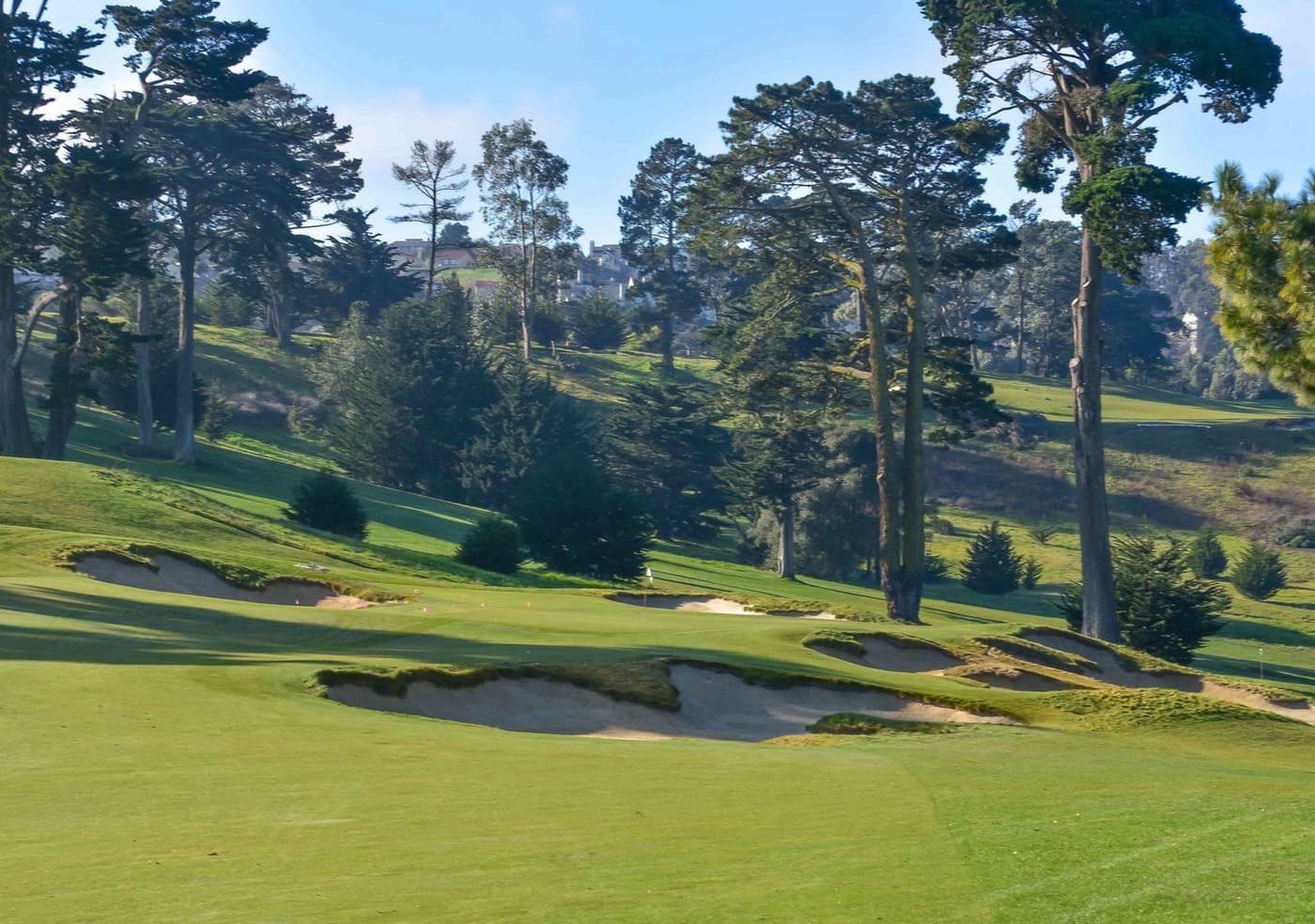- Courses
- North America
- USA
- California

- Address844 W Orange Ave, South San Francisco, CA 94080, USA
- Championships hosted
The California Golf Club of San Francisco dates back to the Golden Age of design and, although the club can trace its roots back to 1918, California Golf Club did not truly come of age until it moved to its present site in the mid 1920s.
The club originally commissioned little known Scotsman Willie Lock to design the course on the new site in the fashionable Bay Area, but an Irishman, Arthur Vernon Macan, replaced him before construction started. It’s unclear as to why Locke was replaced by Macan but we do know that Locke routed California, so he should receive posthumous credit. Alister MacKenzie was drafted in to address shortfalls in California’s bunkering in 1927 and since then the club’s reputation soared.
Former Walker Cup player Gene Andrews won the US Senior Men's Amateur Championship here at the California Golf Club of San Francisco in 1970, which was probably the club’s proudest moment.
In 2005, after years of struggling with putting surfaces infested with roundworms, the club decided to rebuild the greens and Kyle Phillips was the chosen architect following a dramatic proposal. Not only did Phillips rebuild the greens, he also built five new holes so that the club could boast a stronger outward nine to complement the existing excellent homeward nine.
According to his official website “Kyle Phillips Golf Course Design renovated and restored the course using 1927 as a benchmark when Dr Alister MacKenzie re-bunkered the course. The original course, designed by A. Vernon Macan, had been compromised in the 1960s when San Bruno Creek gave way to the existing Westborough Road, leaving only 13 of the original holes intact… The first event at the newly renovated course was highlighted with a 6-hole exhibition by PGA Tour player Arron Oberholser and former U.S. Open Champion Ken Venturi hitting the ceremonial first ball.”
The California Golf Club of San Francisco can now boast tournament measurements. From the new back tees, which are aptly called Venturi, the course can be stretched to more than 7,200 yards.
The following edited extract by George Waters is from Volume Six of Golf Architecture: A Worldwide Perspective. Reproduced with kind permission. To obtain a copy of the book, email Paul Daley at fswing@bigpond.net.au.
“The California Club of San Francisco completed work a few years ago that nicely illustrates the value of component restoration. Before the project, the course was a scramble of different designs. The original routing had been substantially altered by land sales and highway projects. Some very interesting holes playing along a creek had been lost for ever.
Although Alister MacKenzie had performed a complete redesign of the course’s bunkering early in the club’s history, years of wear and tear, tinkering and redesign had stolen nearly all of the character from his work. Newly constructed ponds and other impromptu features further detracted from what is arguably the best golfing ground held by any of the courses in San Francisco.
Kyle Phillips, the entrusted architect, approached the two nines differently. The routing of the back nine was more or less intact, and there was a reasonable amount of photographic evidence regarding MacKenzie’s bunkering. Phillips worked very closely with the original holes on the back nine, deviating only slightly from a full restoration.
The front nine was a different story. This was where large parts of the original course had been lost and where photographic record was limited. Philips had to devise some creative solutions to these holes to get the most out of the property. By relocating the practice area away from the clubhouse he was able to make use of some exciting terrain that was previously unused.
He also engaged in large-scale earthwork to recreate the feel and playing characteristics of the lost creekside holes. At the same time, Phillips kept the bunkering style consistent and chose to restore selected elements. This kept the front nine consistent with the back nine; additionally, it connected the history of the course. The result is a design that uses the property to the best advantage, while making a strong connection with the past. The ‘Cal Club’ represents a highly successful component restoration.”
Course Reviews
Leave a Review
This course has not been reviewed.
If you have played this course, consider .
Thanks for the review
Your review has been successfully submitted and will be reviewed for approval.
Course Reviewed
You’ve already submitted a review for this course.
Course Architect
View All
Alister MacKenzie was born in England, but his parents were Scottish and the family holidayed every year close to where his father was raised in the traditional Clan MacKenzie lands of Sutherland.





